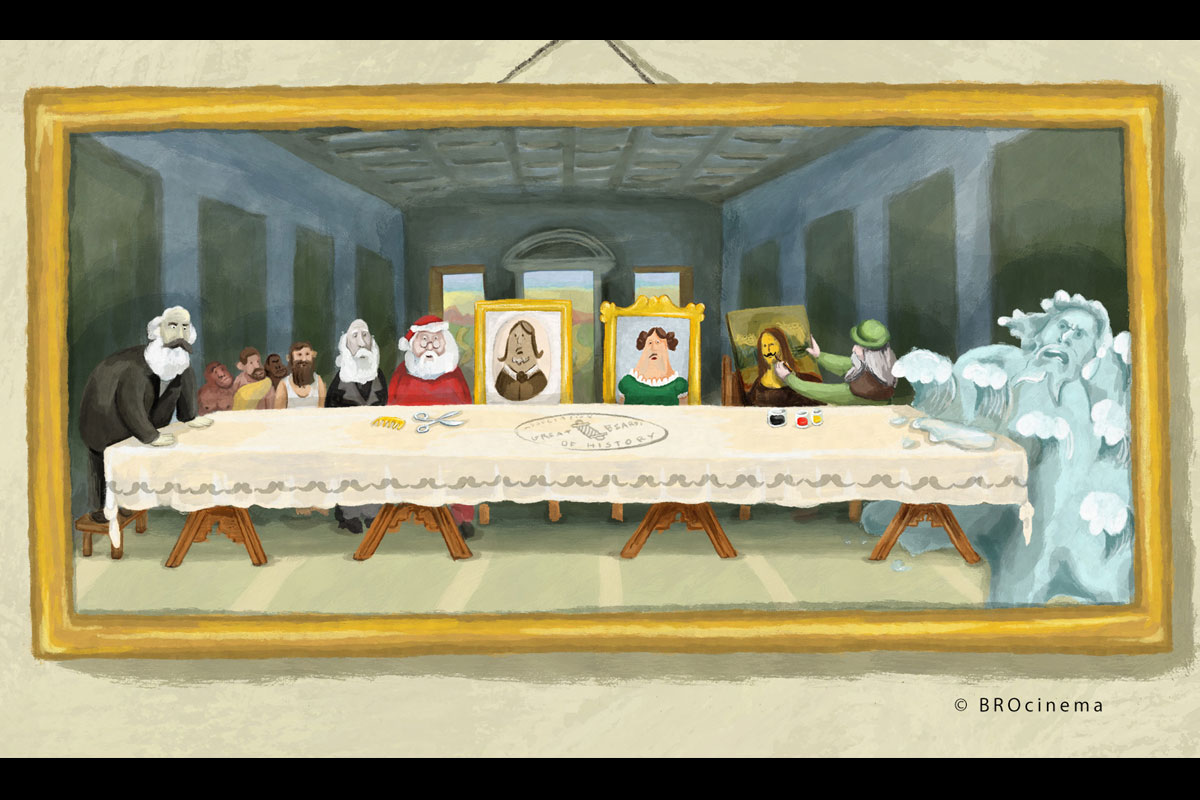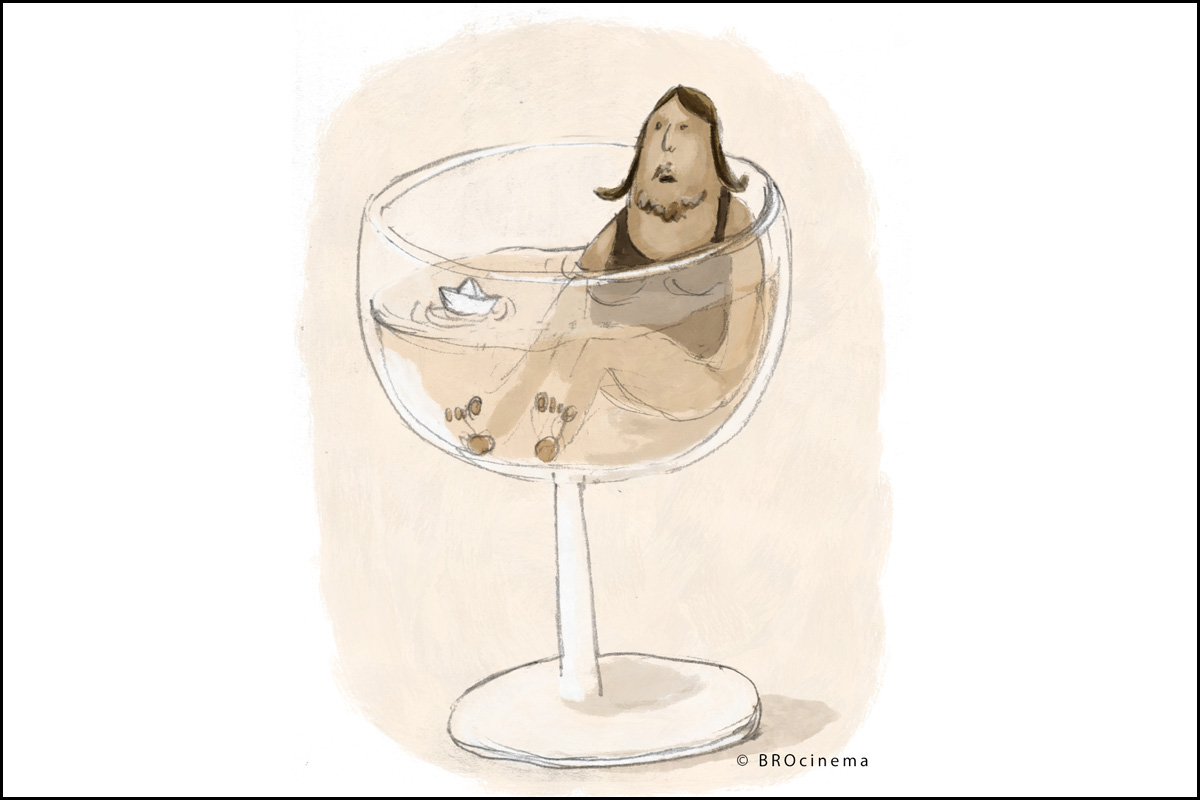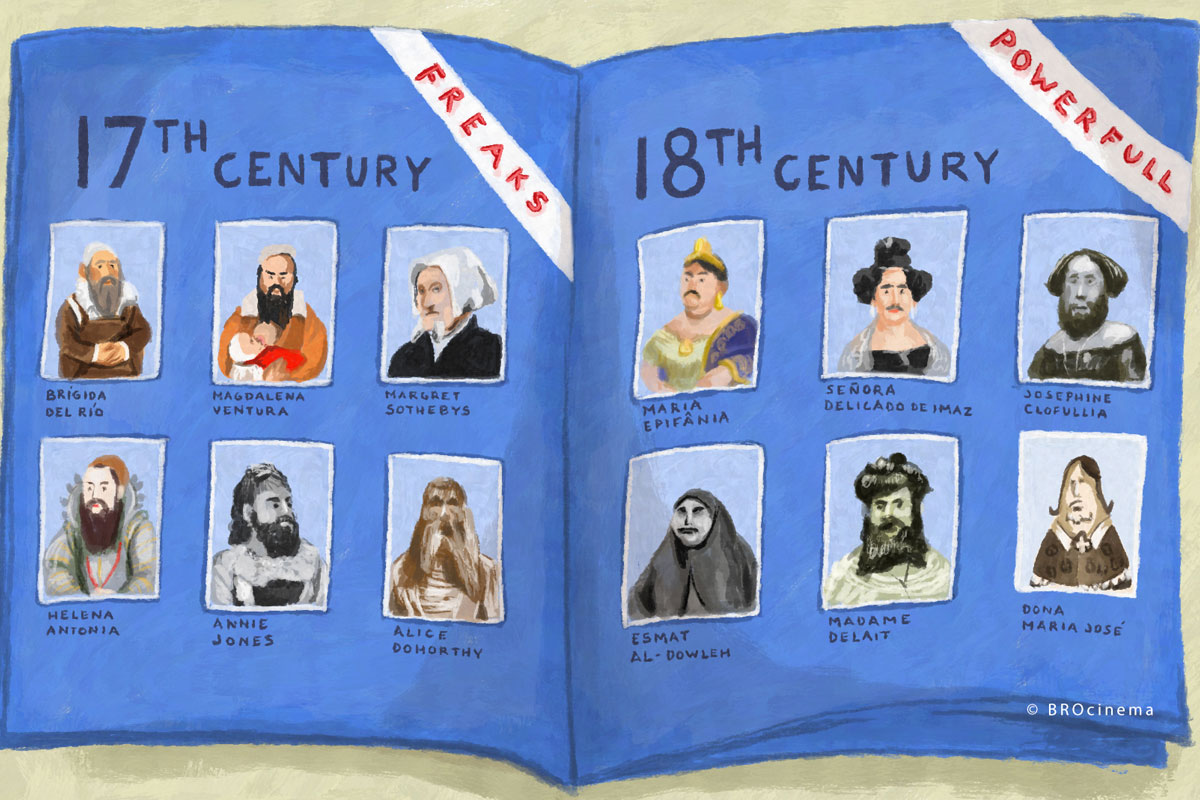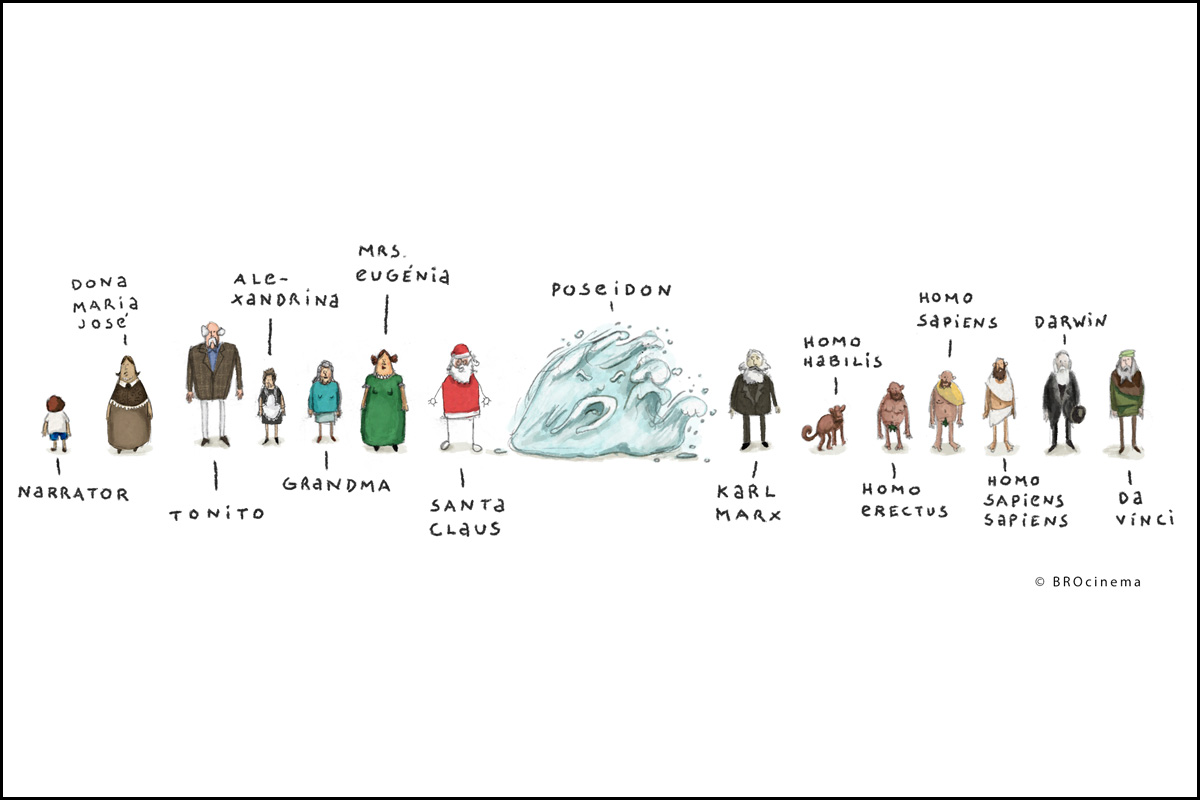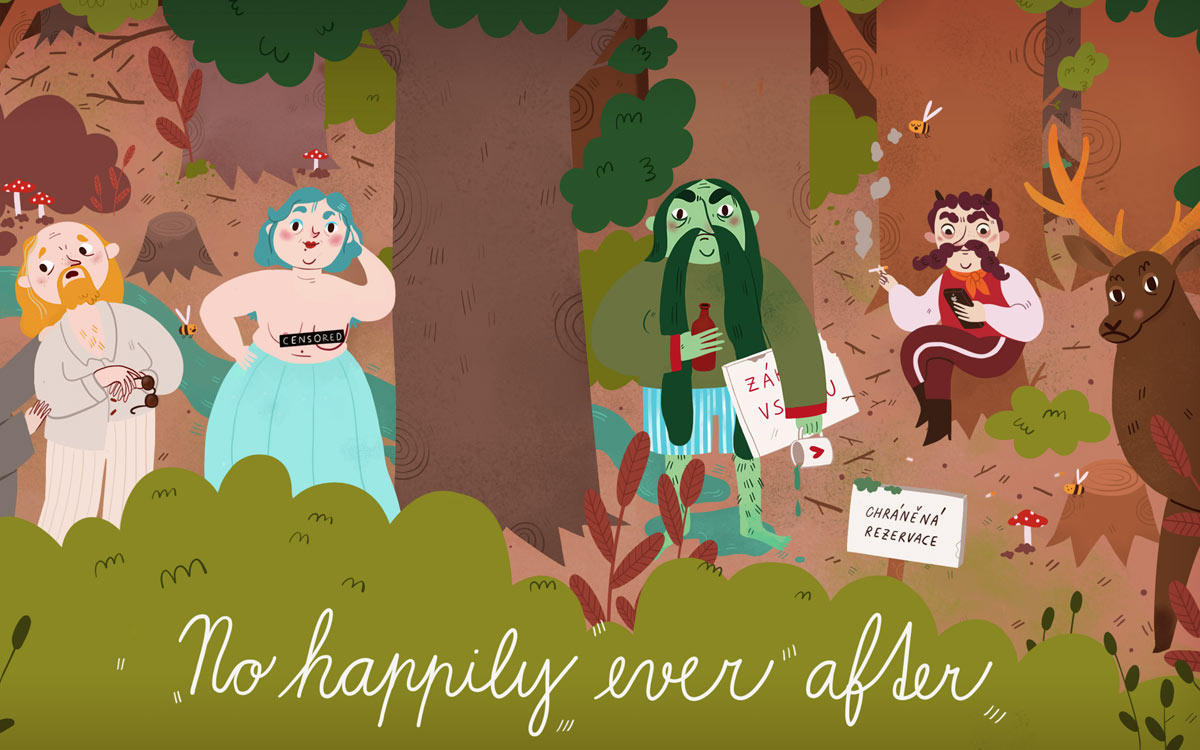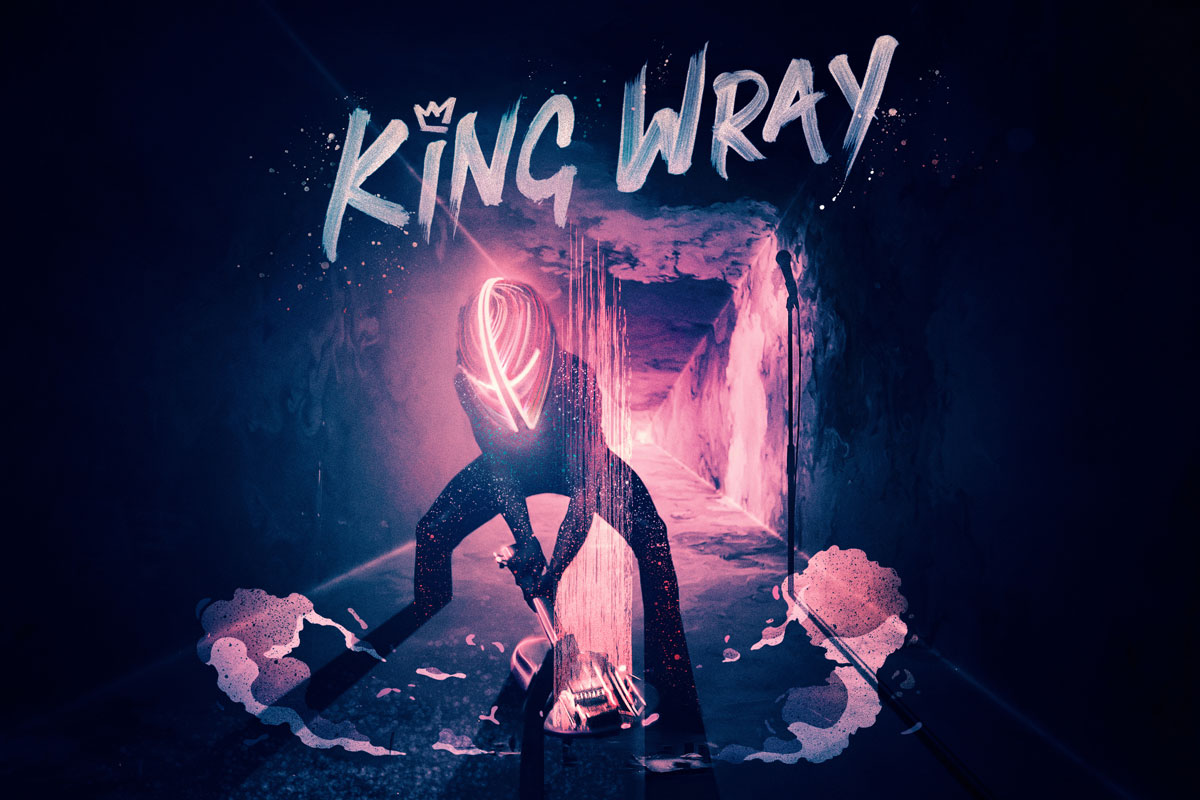“In Her Face”
Synopsis
In Her Face is a personal story starting with a portrait that is in the origin of the family. It belongs to Dª Maria José, a lady who had a beard and a moustache at a time when using these was considered a sign of strength, power and sensuality. She lived in the 19th century and the large house she ordered to build has stayed in the family.
However, her picture disappeared. It was that empty space on the wall that triggered an investigation to find the person responsible for such disappearance. Some of the suspects were part of the family history, others, albeit real, showed up tied to the imagination.
As time went by, the house started deteriorating and as Grandma got older, the portrait remained at large. To try and revert the situation, Grandma decided to resolve the mystery and picked up the portrait she had hid in a drawer a few years back and brought it back to daylight. Being ugly was no longer more important than preserving the history and memories of the family.
In Her Face
Director: Margarida Madeira
Producer: Ana Paula Catarino
Production company: BRO Cinema
Format: 11 minutes
Target audience: General
Technique: 2D hand drawn / Stop-motion
In Her Face is an appealing short animated film project by Margarida Madeira that we came across at CEE Animation Forum 2020. It tells of the director’s family’s history centering on a portrait of her great-grandmother, drawn with a mustache and beard on her face. This thought-provoking film depicts the changes in the female role throughout the history in Portugal.
We heard the detailed story behind the film project from Margarida Madeira, the director and author of the film.
Interview with Margarida Madeira
Hideki Nagaishi (HN): Could you please let us know the key points of your animated short project that you would like to appeal to the prospective audience?
Margarida Madeira: This project is a personal story starting from a portrait that relates to the origins of my family. The person in the portrait is my great-grandmother who lived in the 19th century and had a very evident mustache and beard. For women, having a mustache and beard at that time was considered by society to be a sign of power, strength and even sensuality by the opposite sex. She commissioned it in a big house that has remained in the family until this day, where my grandmother lives nowadays.
When I was a child, I used to stare at the portrait every time I passed by it in the hall. But one day, after my grandfather’s death, the picture was no longer there. It was a big mystery for me that I really needed to solve: who took the picture from the wall and why?
HN: How did the project start? And where did the initial idea of the story come from?
Margarida Madeira: It was actually just a few years ago that I discovered where the picture was and who took it from the wall. Since then, I started to think of why it happened and this idea stayed in my head until the moment I decided to develop the film.
Recently, some issues and misunderstandings with my family have occurred. My grandmother is getting old and incapable of taking care of such a big house. She is getting rid of objects such as old photographs and documents because she thinks they are not important anymore. At the same time, I feel that the family is not as united as it was before. We only get together on Christmas and on my grandmothers’ birthday. So, the house is almost empty for the rest of the year. Some rooms are closed because it’s difficult to open the swollen doors due to the humidity. There are cracks in some walls and ceilings and spider webs in the corners.
All of this made me think about what will happen to the house and all the memories of the family after my grandmother’s death.
I thought that showing the importance of the person in the portrait that was hidden could maybe help preserve the memory of her and the house she built. As the portrait of my great-grandmother was hidden for so long, most of my relatives don’t know anything about it.
HN: What kind of message or experience do you want to deliver to the audience through the story?
Margarida Madeira: I think this film could have a lot of layers and I don’t have an order of interpretation for them. I wanted to talk about some ideas and give the audience the freedom to think about them as they want.
So, for example, with this film, I want to think about the importance of memories and the history of the family in our well-being. Even though we are in different branches, far from each other, there is always a root that connects us.
I also want that the audience would think about the changes in the female role throughout history. In the end of the 19th century, in Portugal, there was a short period of time when having a mustache and beard was considered a sign of power, strength and sensuality and was therefore much appreciated. Women accepted these features and wanted them to appear on the portraits done for posterity. This was the same gap of time when women had a little bit more freedom: they were not just some property of father and then husband. But this period was brief and the female condition changed again. After the Portuguese law was updated in 1867, women were again completely dependent on men. This submission was reflected on their pictures: pale women seated by their husbands or parents and without facial hair.
I also would like to reflect on the changes that can occur in one person during life. It was my grandmother who hid the picture in the first place mainly because she considered it ugly. For her, this was more important than the fact that it was that woman who built the house where she is living.
She always liked to tell her friends that she has a granddaughter that is a filmmaker and I like to think that it was for this reason that a few years ago, when she was 90, she picked the picture of my great-grandmother from the drawer and gave it to me. In the end, somehow, I think that she understood how important this picture is and, even if she doesn’t want it again hanging on the wall, at least she knows that it cannot be hidden anymore.
HN: Could you please let us know the most important characteristic of the visual design of the characters and universe for the story, and why?
Margarida Madeira: The picture of my great-grandmother is the object that triggered this whole project and, at the same time, is the link between fiction and reality.
On one hand, it is the portrait of a real woman that represents a very specific time in history: the early years of photography in Portugal that matched with the moment when women had much more power, two centuries ago.
Contrarily, it is the only object, along with the house that she had built, that has been handed down several generations until today, and that helps keep alive the memory of her. That is why it is a stimulus to the imagination. That explains the two visual solutions: stop-motion with wool puppets and 2D animation.
The presence of body hair throughout the whole project led me to the idea of using wool puppets. Its texture and characteristic movements remind me of human hair. I want to use this technique to tell the story of my great-grandmother from the beginning of the film to the moment someone takes her portrait in the film.
From that moment on everything in the film turns into 2D. Using this technique allows me to explore the transformation and metamorphosis of the ideas created by the imaginary process. The events are “stuck” to the plan, as the memories are to the brain and the figures to the pictures.
The facial hair is the element that caught my attention to the portrait in the first place, when I was a child. So, I thought that it was an important element and I had to work with it. I decided that, despite the technique (wool puppets), I want to make as many references to it as I could, not only in the text but also in the visuals.



